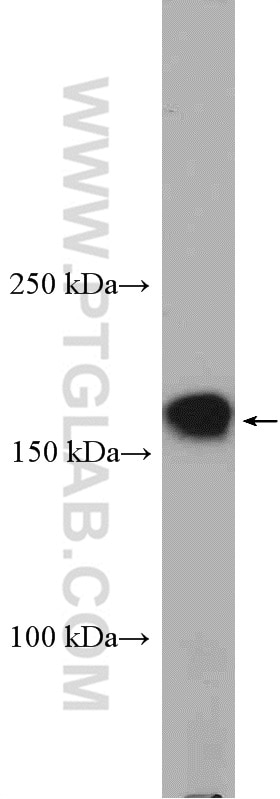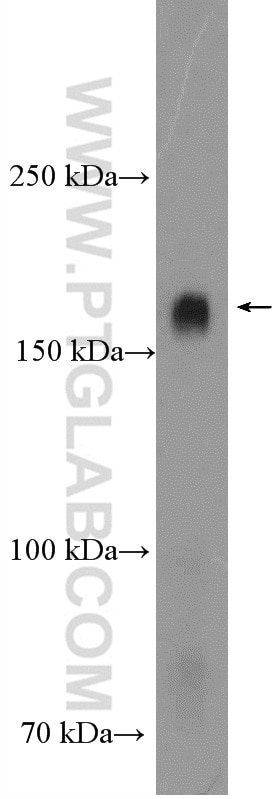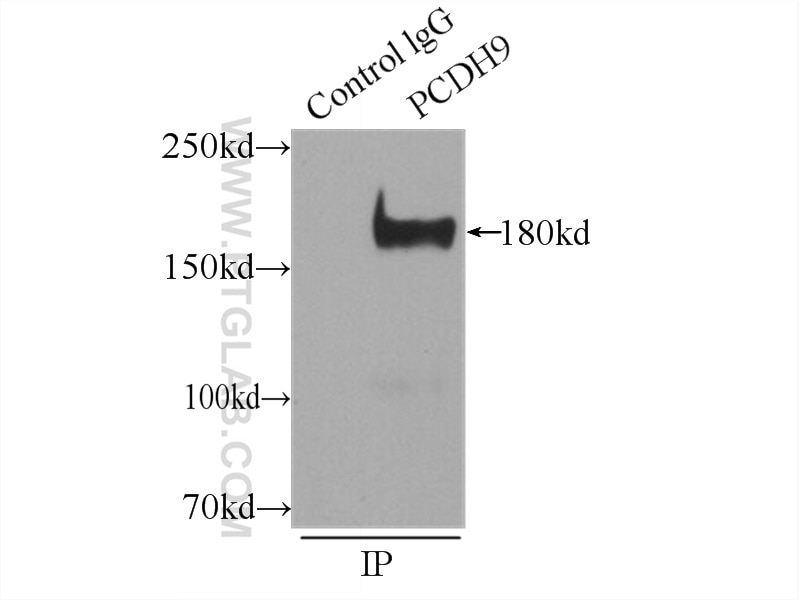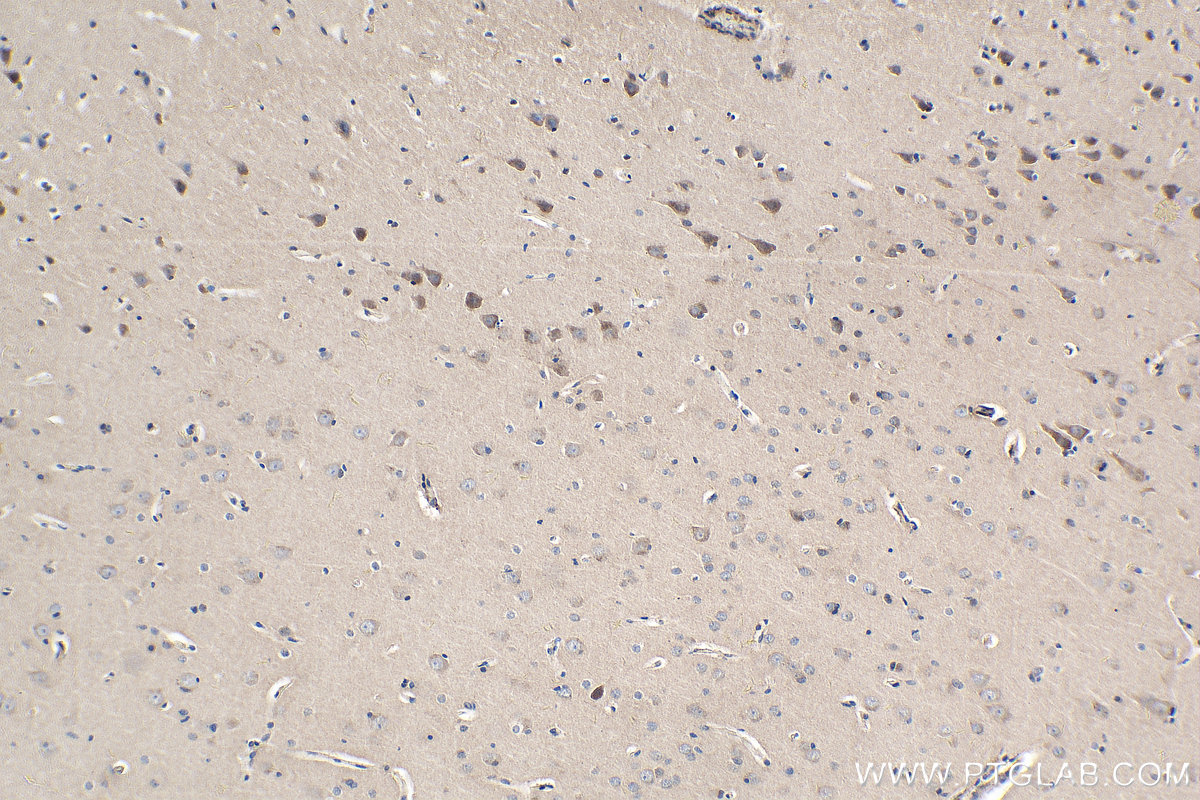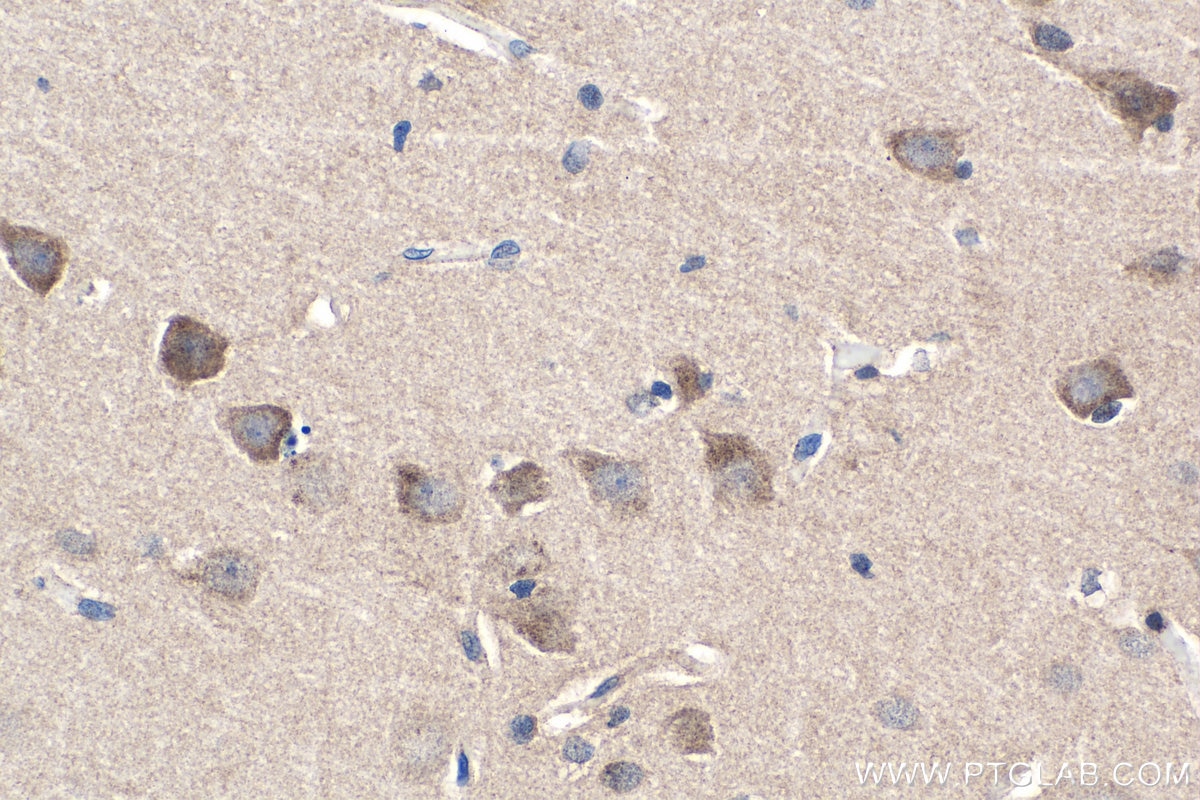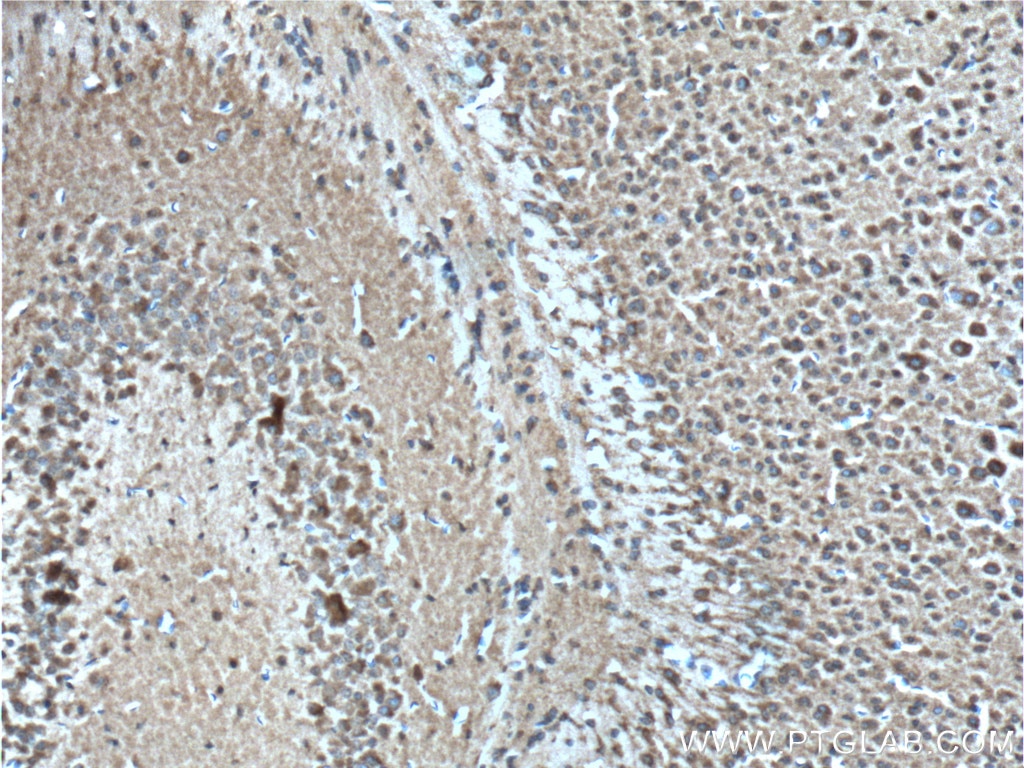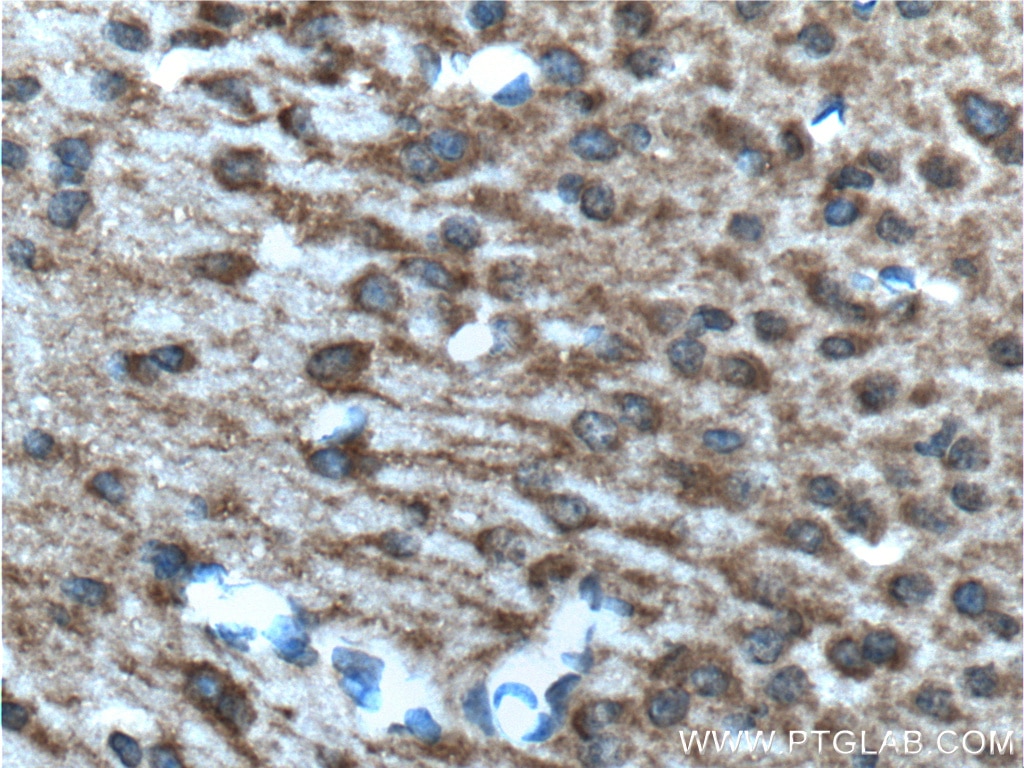PCDH9 Polyklonaler Antikörper
PCDH9 Polyklonal Antikörper für IHC, IP, WB, ELISA
Wirt / Isotyp
Kaninchen / IgG
Getestete Reaktivität
human, Maus, Ratte
Anwendung
WB, IP, IHC, ELISA
Konjugation
Unkonjugiert
Kat-Nr. : 25090-1-AP
Synonyme
Galerie der Validierungsdaten
Geprüfte Anwendungen
| Erfolgreiche Detektion in WB | Maushirngewebe, Rattenhirngewebe |
| Erfolgreiche IP | Maushirngewebe |
| Erfolgreiche Detektion in IHC | humanes Gliomgewebe, Maushirngewebe Hinweis: Antigendemaskierung mit TE-Puffer pH 9,0 empfohlen. (*) Wahlweise kann die Antigendemaskierung auch mit Citratpuffer pH 6,0 erfolgen. |
Empfohlene Verdünnung
| Anwendung | Verdünnung |
|---|---|
| Western Blot (WB) | WB : 1:500-1:1000 |
| Immunpräzipitation (IP) | IP : 0.5-4.0 ug for 1.0-3.0 mg of total protein lysate |
| Immunhistochemie (IHC) | IHC : 1:250-1:1000 |
| It is recommended that this reagent should be titrated in each testing system to obtain optimal results. | |
| Sample-dependent, check data in validation data gallery | |
Veröffentlichte Anwendungen
| WB | See 2 publications below |
Produktinformation
25090-1-AP bindet in WB, IP, IHC, ELISA PCDH9 und zeigt Reaktivität mit human, Maus, Ratten
| Getestete Reaktivität | human, Maus, Ratte |
| In Publikationen genannte Reaktivität | human, Maus |
| Wirt / Isotyp | Kaninchen / IgG |
| Klonalität | Polyklonal |
| Typ | Antikörper |
| Immunogen | PCDH9 fusion protein Ag18696 |
| Vollständiger Name | protocadherin 9 |
| Berechnetes Molekulargewicht | 1237 aa, 136 kDa |
| Beobachtetes Molekulargewicht | 150-180 kDa |
| GenBank-Zugangsnummer | BC136626 |
| Gene symbol | PCDH9 |
| Gene ID (NCBI) | 5101 |
| Konjugation | Unkonjugiert |
| Form | Liquid |
| Reinigungsmethode | Antigen-Affinitätsreinigung |
| Lagerungspuffer | PBS mit 0.02% Natriumazid und 50% Glycerin pH 7.3. |
| Lagerungsbedingungen | Bei -20°C lagern. Nach dem Versand ein Jahr lang stabil Aliquotieren ist bei -20oC Lagerung nicht notwendig. 20ul Größen enthalten 0,1% BSA. |
Hintergrundinformationen
Protocadherin-9 (PCDH9) is a member of the protocadherin family that belongs to the cadherin superfamily. Protocadherins are calcium-dependent adhesion proteins and have been implicated in neural cell-cell interactions. They are abundantly expressed in the central nervous system during embryonic development and in adulthood (PMID: 24214103). PCDH9 is a single-pass type I membrane protein that contains seven cadherin motifs in its extracellular domain. It might be involved in the formation of specific neural circuits during neural development (PMID: 22982106).
What is the molecular weight of PCDH9?
The calculated molecular weight of PCDH9 is 136 kDa.
What are the isoforms of PCDH9?
Alternatively spliced transcript variants encoding distinct isoforms have been identified for the PCDH9 gene; a short transcript, a standard transcript, a transcript with additional exon 2, and another transcript with variant exon 3 (PMID: 15095963).
What is PCDH9's involvement in neural development?
The family of protocadherins is essential for neural development as mutations in these proteins give rise to neurodevelopmental disorders such as schizophrenia and epilepsy. However, the exact mechanisms of loss of function and the role of PCDH9 remain to be fully characterized (PMID: 22982106).
Protokolle
| Produktspezifische Protokolle | |
|---|---|
| WB protocol for PCDH9 antibody 25090-1-AP | Protokoll herunterladen |
| IHC protocol for PCDH9 antibody 25090-1-AP | Protokoll herunterladen |
| IP protocol for PCDH9 antibody 25090-1-AP | Protokoll herunterladen |
| Standard-Protokolle | |
|---|---|
| Klicken Sie hier, um unsere Standardprotokolle anzuzeigen |
Publikationen
| Species | Application | Title |
|---|---|---|
Neuron Longitudinal single-cell transcriptional dynamics throughout neurodegeneration in SCA1 | ||
Onco Targets Ther MiR-200a-3p promoted the malignant behaviors of ovarian cancer cells through regulating PCDH9. |
